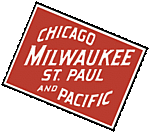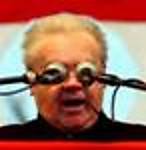Early Aviation
Discuss World War I and the early years of aviation thru 1934.
Discuss World War I and the early years of aviation thru 1934.
Hosted by Jim Starkweather
The straw that broke the Camel's back?

Lucky13

Joined: June 01, 2006
KitMaker: 1,707 posts
AeroScale: 1,119 posts

Posted: Tuesday, August 15, 2006 - 07:04 PM UTC
Awesome work Stephen!!

Repainted

Joined: April 04, 2006
KitMaker: 1,058 posts
AeroScale: 1,004 posts

Posted: Tuesday, August 15, 2006 - 07:15 PM UTC
Top score Stephen. This will get the folks to building Camel for some time ahaed.
Can you tell me what green you have used?
Lars
Can you tell me what green you have used?
Lars

JackFlash

Joined: January 25, 2004
KitMaker: 11,669 posts
AeroScale: 11,011 posts

Posted: Tuesday, August 15, 2006 - 07:45 PM UTC
Thanks ever-so-much Jan and Lars! Lars I used Testors Model Master Field Drab enamel.

JackFlash

Joined: January 25, 2004
KitMaker: 11,669 posts
AeroScale: 11,011 posts

Posted: Wednesday, August 16, 2006 - 08:35 AM UTC
Quoted Text
From a website far far away ...John Masters wrote me and asked...
Nicely done, Stephen. I like the build-link as well. How did you make the castor stains on the underside? From the factory on the hill, John
Well I began by making sure that the starter magneto was off then I had Rowan turn the prop twice. Then I turned the mag back on and...
I have a wash mixture of field drab and tan. I airbrush it on and then spray a clear dull coat barrier down. Once dry I stipple the same mixture (sludge at the bottom) with a stiff bristle brush and dull coat it again.
Removed by original poster on 08/18/06 - 03:17:27 (GMT).

JackFlash

Joined: January 25, 2004
KitMaker: 11,669 posts
AeroScale: 11,011 posts

Posted: Friday, August 25, 2006 - 12:47 AM UTC
Greetings all;
For me it is most impressive that the hits / reads on this thread have continued to grow even after the build has been completed. For those interested I add here a bit of fun from my Camel 2F.1 builds as it is applicable to the wing struts. Enjoy.
I have just united both builds top wings to their respective fuselages. I replaced the kit cabane struts with the airfoil cross-sectioned brass from "STRUTZ." When working with brass I also like to use hobby black to give the brass pieces a surface etched patine that lets paint adhere well. (A little tip from our model railroading neighbours.) But you should use baking soda to neutralize the hobby black then begin painting these items. As with all Eduard Camels I use a pinning method to secure the interplane (wing tip) struts.
First I use an .080 gauge drill bit (smallest bit in the commercially available sets.) I drill corresponding holes in the strut ends and the strut locator sockets. Then I insert fine brass wire (model railroad items.) No hobby black needed here. Into the strut ends and secure with cyano glue. Then I secure these items at their upper most ends into the the upper wing strut locator holes and let them cure. The brass allows for some adjustments even after they are secure to the lower wing sockets. From there it is easy to install cabane struts.
This system can be modified by adding the cabane struts first then the outer wing interplane struts. The trick is to have all struts the exact length needed. Using the Eduard kit items is the best choice to match any scratchbuilt items. The resulting structure is remarkably strong. I have tried the kit suggested method with disappointing results.
For me it is most impressive that the hits / reads on this thread have continued to grow even after the build has been completed. For those interested I add here a bit of fun from my Camel 2F.1 builds as it is applicable to the wing struts. Enjoy.
I have just united both builds top wings to their respective fuselages. I replaced the kit cabane struts with the airfoil cross-sectioned brass from "STRUTZ." When working with brass I also like to use hobby black to give the brass pieces a surface etched patine that lets paint adhere well. (A little tip from our model railroading neighbours.) But you should use baking soda to neutralize the hobby black then begin painting these items. As with all Eduard Camels I use a pinning method to secure the interplane (wing tip) struts.
First I use an .080 gauge drill bit (smallest bit in the commercially available sets.) I drill corresponding holes in the strut ends and the strut locator sockets. Then I insert fine brass wire (model railroad items.) No hobby black needed here. Into the strut ends and secure with cyano glue. Then I secure these items at their upper most ends into the the upper wing strut locator holes and let them cure. The brass allows for some adjustments even after they are secure to the lower wing sockets. From there it is easy to install cabane struts.
This system can be modified by adding the cabane struts first then the outer wing interplane struts. The trick is to have all struts the exact length needed. Using the Eduard kit items is the best choice to match any scratchbuilt items. The resulting structure is remarkably strong. I have tried the kit suggested method with disappointing results.

JackFlash

Joined: January 25, 2004
KitMaker: 11,669 posts
AeroScale: 11,011 posts

Posted: Friday, October 20, 2006 - 03:42 PM UTC
With the Review being added I am just tacking it on to this thread for future reference.
Camel Combo Review
Camel Combo Review

JackFlash

Joined: January 25, 2004
KitMaker: 11,669 posts
AeroScale: 11,011 posts

Posted: Saturday, August 24, 2013 - 09:27 AM UTC
Greetings all the following was sento my gmail and I will also provide my response.
Greetings,
C2 is of course the factory standard. C7 is the cut away access for the gun breeches - in the field modification. Here is a cropped image from the Profipack #8056 kit. While Barker's B6313 came factory standard by the time it was photographed in Italy (along with other machines of 28 Sqn in about July 1918) the cockpit coaming is cut down. See the Front cover of "Barker VC" by Wayne Ralph. Grub Street, 1997 & 1999.
Good Luck
Stephen T. Lawson



Quoted Text
Stephen,
I am building a few 1/48th scale Eduard Camel. Some with aftermarket decals. I saw your remark concerning the misidentfication of the interplane struts. The front one should go in the rear as it is twenty thousandths longer.
I am confused about using the upper cockpit openings options. I know the one with the fully enclosed coaming(part C2) was the most common version but I am unsure when to use the version that is open to the machine guns(part C7). The instructions show Barker's two Camel versions with C7 but the color profiles of Barker's two Camels show the C2 cockpit opening. Can this be determined by aircraft serial numbers? It would require a good photo, of the particular Camel being modeled, of the starboard side revealing the cut down cockpit side for a positive conclusion. Something that would be hard or impossible to come by.
Was the enlarged upper wing opening just a field modification(as Barker did on his final version) or was this something the various manufacturer's starting doing to all Camels after a certain serial number?? I have the datafile but not much use to answer my questions.
Greetings,
C2 is of course the factory standard. C7 is the cut away access for the gun breeches - in the field modification. Here is a cropped image from the Profipack #8056 kit. While Barker's B6313 came factory standard by the time it was photographed in Italy (along with other machines of 28 Sqn in about July 1918) the cockpit coaming is cut down. See the Front cover of "Barker VC" by Wayne Ralph. Grub Street, 1997 & 1999.
Good Luck
Stephen T. Lawson



 |






